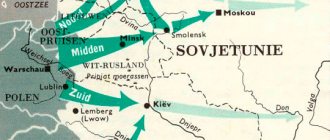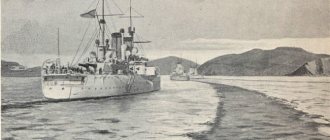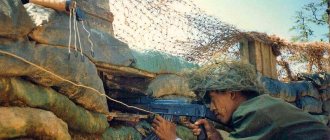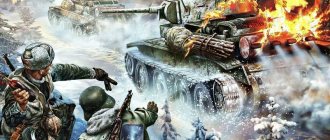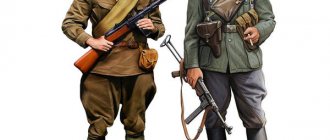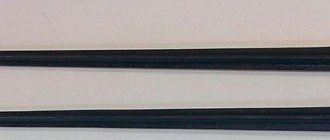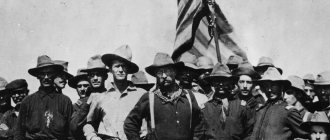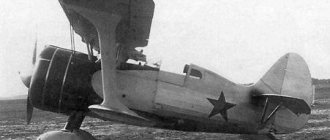➤Reasons ➤Events near the village of Mainila ➤Relationship of forces and means ➤Progress of the war ➤Kuusinen's government ➤Mannerheim Line ➤Exclusion of the USSR from the League of Nations ➤why the war dragged on ➤Discipline in the Red Army ➤Help of European countries to Finland ➤Conclusion of peace ➤Losses in the war ➤Results of the war ➤The fate of prisoners ➤Finnish cuckoos ➤Bombing schedule of Finland
Causes of the war
After the signing of the Soviet-German non-aggression pact, Germany went to war with Poland, and relations between the USSR and Finland began to strain. One of the reasons is a secret document between the USSR and Germany on delimiting spheres of influence. According to it, the influence of the USSR extended to Finland, the Baltic states, western Ukraine and Belarus, and Bessarabia.
Realizing that a major war was inevitable, Stalin sought to protect Leningrad, which could be shelled by artillery from Finnish territory. Therefore, the task was to move the border further north. To resolve the issue peacefully, the Soviet side offered Finland the lands of Karelia in exchange for moving the border on the Karelian Isthmus, but any attempts at dialogue were suppressed by the Finns. They didn't want to come to an agreement.
Brief historical background
To understand the reasons why the Finnish War occurred, it is necessary to recall the history of this state. Finland appeared not so long ago - in 1917, on December 6th. This happened because the Russian state collapsed. The Finns received all the lands of the Grand Duchy of Finland with Pechenega, territories on the Karelian Isthmus, and Sortavala. After secession, the country experienced a civil war. Anti-communist forces won, which did not increase sympathy for Soviet Russia, because it supported the Reds.
In the second half of the twenties, relations between the USSR and Finland improved; they did not become friendly, but they could not be called hostile.
Reason for war
The reason for the Soviet-Finnish war of 1939-1940 was an incident near the village of Mainila on November 25, 1939 at 15:45. This village is located on the Karelian Isthmus, 800 meters from the Finnish border. Mainila was subjected to artillery shelling, as a result of which 4 representatives of the Red Army were killed and 8 were wounded.
On November 26, Molotov summoned the Finnish ambassador in Moscow (Irie Koskinen) and presented a note of protest, stating that the shelling was carried out from the territory of Finland, and that the only thing that saved him from starting a war was that the Soviet army had an order not to succumb to provocations.
On November 27, the Finnish government responded to the Soviet note of protest. Briefly, the main provisions of the answer were as follows:
- The shelling actually took place and lasted approximately 20 minutes.
- The shelling came from the Soviet side, approximately 1.5-2 km southeast of the village of Maynila.
- It was proposed to create a commission that would jointly study this episode and give it an adequate assessment.
What really happened near the village of Maynila? This is an important question, since it was as a result of these events that the Winter (Soviet-Finnish) War was unleashed. The only thing that can be stated unequivocally is that there really was shelling of the village of Maynila, but who carried it out is impossible to establish through documentation. Ultimately, there are 2 versions (Soviet and Finnish), and each needs to be evaluated. The first version is that Finland shelled the territory of the USSR. The second version is that it was a provocation prepared by the NKVD.
Why did Finland need this provocation? Historians talk about two reasons:
- The Finns were a political tool in the hands of the British, who needed war. This assumption would be reasonable if we consider the winter war in isolation. But if we remember the realities of those times, then at the time of the incident a world war was already underway, and England had already declared war on Germany. England's attack on the USSR automatically created an alliance between Stalin and Hitler, and this alliance would sooner or later hit England itself with all its might. Therefore, to assume this is tantamount to assuming that England decided to commit suicide, which, of course, was not the case.
- They wanted to expand their territories and influence. This is an absolutely stupid hypothesis. This is from the category - Liechtenstein wants to attack Germany. It's nonsense. Finland had neither the strength nor the means for war, and everyone in the Finnish command understood that their only chance of success in the war with the USSR was a long defense that would exhaust the enemy. With such situations, no one will disturb the den with the bear.
The most adequate answer to the question posed is that the shelling of the village of Mainila is a provocation of the Soviet government itself, which was looking for any excuse to justify the war with Finland. And it was this incident that was subsequently presented to Soviet society as an example of the treachery of the Finnish people, who needed help to carry out the socialist revolution.
Prerequisites for military conflict
The beginning of the conflict can hardly be called “unexpected.” The “explosive” year of 1939 is a conditional date, because disagreements between the Soviet Union and Finland have existed for a long time. The main reason for the conflict is invariably said to be the desire of the leadership of the Union to move the border away from Leningrad due to the military operations that began in Europe with the participation of Germany, while at the same time gaining the opportunity to own the maritime territories of Karelia.
Back in 1938, the Finns were offered an exchange - in exchange for the part of the Karelian Isthmus that interested the commander-in-chief, it was proposed to take control of the territory of a part of Karelia, twice as large as what the “Country of Soviets” would have received.
Finland, despite the fairly adequate terms of the exchange, did not agree to the demands proposed to it by the Soviet Union. This was precisely the key cause of the conflict. The country's leadership believed that the proposed territory could not be equivalent to the Karelian Isthmus, on which, by the way, a network of fortifications had already been built between Ladoga and the Gulf of Finland (the so-called “Mannerheim Line”).
Photo. Mannerheim Line 1939
In general, there are many myths associated with the Mannerheim Line. One of them says that its size was so huge and its intensity so gigantic that it would have been impossible for any of the armies operating at that time to pass it without serious losses.
Scheme. Mannerheim line device
In fact, even Carl Gustav Mannerheim himself, the President of Finland, admitted that most of these structures were one-story and single-level, unable to withstand an army equipped with any equipment for a long time.
Balance of forces and means
It is indicative how the forces were correlated during the Soviet-Finnish war.
Below is a brief table that describes how the opposing countries approached the Winter War. The balance of forces in the Soviet-Finnish war
| 5:1 | |
| Aviation | 21:1 |
| Tanks | 49:1 |
| Infantry | 1,3:1 |
In all aspects except infantry, the USSR had a clear advantage. But conducting an offensive, superior to the enemy by only 1.3 times, is an extremely risky undertaking. In this case, discipline, training and organization come to the fore. The Soviet army had problems with all three aspects. These figures once again emphasize that the Soviet leadership did not perceive Finland as an enemy, expecting to destroy it in the shortest possible time.
“We are not going to Finland as conquerors”
Is that why he suggested that Stalin sign the pact?
Yes. Late in the evening of August 19, Count Werner von der Schulenburg sent from Moscow to Berlin a draft of the Soviet-German non-aggression treaty, which was presented to the German ambassador to the USSR by the Chairman of the Council of People's Commissars (government) and the People's Commissar for Foreign Affairs of the USSR, Vyacheslav Molotov. When meeting with Count Schulenburg, handing him the project, Molotov emphasized that this treaty would come into force only if a special protocol on foreign policy issues was signed, which, at the request of the Soviet side, was “an integral part of the pact.” Composite - and absolutely secret.
Progress of the war
The Soviet-Finnish or Winter War can be divided into 2 stages: the first (December 39th - January 7th 40th) and the second (January 7th 40th - March 12th 40th). What happened on January 7, 1940? Timoshenko was appointed commander of the army, who immediately set about reorganizing the army and establishing order in it.
First stage
The Soviet-Finnish war began on November 30, 1939, and the Soviet army failed to carry it out briefly. The USSR army actually crossed the state border of Finland without declaring war. For its citizens, the justification was the following - to help the people of Finland in overthrowing the bourgeois government of the warmonger.
The Soviet leadership did not take Finland seriously, believing that the war would be over in a few weeks. They even mentioned a figure of 3 weeks as a deadline. More specifically, there should be no war. The Soviet command's plan was approximately as follows:
- Send in troops. We did this on November 30th.
- Creation of a working government controlled by the USSR. On December 1, the Kuusinen government was created (more on this later).
- Lightning-fast attack on all fronts. It was planned to reach Helsinki in 1.5-2 weeks.
- Declining the real government of Finland towards peace and complete surrender in favor of the Kuusinen government.
The first two points were implemented in the first days of the war, but then problems began. The blitzkrieg did not work out, and the army was stuck in the Finnish defense. Although in the initial days of the war, until approximately December 4, it seemed that everything was going according to plan - Soviet troops were moving forward. However, very soon they stumbled upon the Mannerheim line. On December 4, the armies of the eastern front (near Lake Suvantojärvi), on December 6 - the central front (Summa direction), and on December 10 - the western front (Gulf of Finland) entered it. And it was a shock. A huge number of documents indicate that the troops did not expect to encounter a well-fortified defense line. And this is a huge question for the Red Army intelligence.
In any case, December was a disastrous month that thwarted almost all the plans of the Soviet Headquarters. The troops advanced inland slowly. Every day the pace of movement only decreased. Reasons for the slow advance of Soviet troops:
- Terrain. Almost the entire territory of Finland is forests and swamps. It is difficult to use equipment in such conditions.
- Application of aviation. Aviation was practically not used in terms of bombing. There was no point in bombing villages adjacent to the front line, since the Finns were retreating, leaving behind scorched earth. It was difficult to bomb the retreating troops, since they were retreating with civilians.
- Roads. While retreating, the Finns destroyed roads, caused landslides, and mined everything they could.
Formation of the Kuusinen government
On December 1, 1939, the People's Government of Finland was formed in the city of Terijoki. It was formed on territory already captured by the USSR, and with the direct participation of the Soviet leadership. The Finnish people's government included:
- Chairman and Minister of Foreign Affairs – Otto Kuusinen
- Minister of Finance – Mauri Rosenberg
- Minister of Defense - Axel Antila
- Minister of the Interior – Tuure Lehen
- Minister of Agriculture – Armas Eikia
- Minister of Education – Inkeri Lehtinen
- Minister for Karelia Affairs – Paavo Prokkonen
Outwardly it looks like a full-fledged government. The only problem is that the Finnish population did not recognize him. But already on December 1 (that is, on the day of its formation), this government concluded an agreement with the USSR on the establishment of diplomatic relations between the USSR and the FDR (Finnish Democratic Republic). On December 2, a new agreement is signed - on mutual assistance. From this moment on, Molotov says that the war continues because a revolution took place in Finland, and now it is necessary to support it and help the workers. In fact, it was a clever trick to justify the war in the eyes of the Soviet population.
Mannerheim Line
The Mannerheim Line is one of the few things that almost everyone knows about the Soviet-Finnish war. Soviet propaganda said about this fortification system that all the world generals recognized its impregnability. This was an exaggeration. The line of defense was, of course, strong, but not impregnable.
The Mannerheim Line (as it received this name already during the war) consisted of 101 concrete fortifications. For comparison, the Maginot Line, which Germany crossed in France, was approximately the same length. The Maginot Line consisted of 5,800 concrete structures. In fairness, it should be noted the difficult terrain conditions of the Mannerheim Line. There were swamps and numerous lakes, which made movement extremely difficult and therefore the defense line did not require a large number of fortifications.
The largest attempt to break through the Mannerheim Line at the first stage was made on December 17-21 in the central section. It was here that it was possible to occupy the roads leading to Vyborg, gaining a significant advantage. But the offensive, in which 3 divisions took part, failed. This was the first major success in the Soviet-Finnish war for the Finnish army. This success came to be called the “Miracle of Summa.” Subsequently, the line was broken on February 11, which actually predetermined the outcome of the war.
Expulsion of the USSR from the League of Nations
On December 14, 1939, the USSR was expelled from the League of Nations. This decision was promoted by England and France, who spoke of Soviet aggression against Finland. Representatives of the League of Nations condemned the actions of the USSR in terms of aggressive actions and the outbreak of war.
Today, the exclusion of the USSR from the League of Nations is cited as an example of the limitation of Soviet power and as a loss in image. In fact, everything is a little different. In 1939, the League of Nations no longer played the role it had been assigned following the First World War. The fact is that back in 1933, Germany left it, refusing to comply with the demands of the League of Nations for disarmament and simply left the organization. It turns out that at the time of December 14, the League of Nations de facto ceased to exist. After all, what kind of European security system can we talk about when Germany and the USSR left the organization?
Second stage of the war
On January 7, 1940, the Headquarters of the Northwestern Front was headed by Marshal Timoshenko. He had to solve all the problems and organize a successful offensive of the Red Army. At this point, the Soviet-Finnish war took a break, and no active operations were carried out until February. From February 1 to 9, powerful attacks began on the Mannerheim line. It was assumed that the 7th and 13th armies were to break through the defense line with decisive flank attacks and occupy the Vuoksy-Karkhul sector. After this, it was planned to move to Vyborg, occupy the city and block the railways and highways leading to the West.
On February 11, 1940, a general offensive of Soviet troops began on the Karelian Isthmus. This was a turning point in the Winter War, as units of the Red Army managed to break through the Mannerheim Line and begin advancing deeper into the country. We advanced slowly due to the specifics of the terrain, the resistance of the Finnish army and severe frosts, but the main thing was that we advanced. At the beginning of March, the Soviet army was already on the western coast of the Vyborg Bay.
This effectively ended the war, since it was obvious that Finland did not have much strength and means to contain the Red Army. From that time on, peace negotiations began, in which the USSR dictated its terms, and Molotov constantly emphasized that the conditions would be harsh, because the Finns forced the war to start, during which the blood of Soviet soldiers was shed.
How events developed
The Soviet-Finnish war is divided into two stages:
- From November 1939 to January 1940. At this time, the Soviet Union was advancing in several directions. The fighting was fierce.
- From February to March 1940. Powerful shelling of Finland, peace negotiations and surrender of the Finns, attack on the Mannerheim Line.
On November 30, Stalin ordered an offensive on the Karelian Isthmus. On December 1, the Red Army captured present-day Zelenogorsk, which was then called Terijoki. On the captured land, the Soviet army was able to establish contact with Otto Kuusinen (the head of the Finnish Communist Party), who proclaimed the creation of the Finnish Democratic Republic. Otto became president and allowed himself the Finnish people to negotiate with the Soviet Union. Official diplomatic relations were established between the USSR and FDR.
At the same time, the Soviet Seventh Army was rapidly advancing towards the Mannerheim Line. In the first ten days of 1939, Soviet soldiers broke through the first chain of fortifications. At this stage, the army stalled because attempts to break through other lines of defense ended in defeat and casualties. Failures at this stage led to the fact that further advance into the interior of the country was suspended.
The Eighth Army was advancing in the north of Lake Ladoga. In a few days, the troops went eighty kilometers deep, but a lightning attack by the Finns stopped them. Half of the Soviet army was destroyed. The Finnish troops were helped by the fact that Soviet soldiers were strongly attached to the roads, and the Finns cut off this connection.
Why did the war last so long
According to the Bolsheviks, the Soviet-Finnish war was supposed to end in 2-3 weeks, and the decisive advantage was to be given by the troops of the Leningrad district alone. In practice, the war dragged on for almost 4 months, and divisions were assembled throughout the country to suppress the Finns. There are several reasons for this:
- Poor organization of troops. This concerns the poor performance of the command staff, but the bigger problem is coherence between the branches of the military. She was practically absent. If you study archival documents, there are a lot of reports according to which some troops fired at others.
- Poor security. The army was in need of almost everything. The war was fought in winter and in the north, where the air temperature dropped below -30 by the end of December. And at the same time, the army was not provided with winter clothing.
- Underestimating the enemy. The USSR did not prepare for war. The plan was to quickly suppress the Finns and solve the problem without war, attributing everything to the border incident of November 24, 1939.
- Support for Finland by other countries. England, Italy, Hungary, Sweden (primarily) - provided assistance to Finland in everything: weapons, supplies, food, airplanes, and so on. The greatest efforts were made by Sweden, which itself actively helped and facilitated the transfer of assistance from other countries. In general, during the Winter War of 1939-1940, only Germany supported the Soviet side.
Stalin was very nervous because the war was dragging on. He repeated - The whole world is watching us. And he was right. Therefore, Stalin demanded a solution to all problems, restoration of order in the army and a speedy resolution of the conflict. To some extent this was achieved. And quite quickly. The Soviet offensive in February-March 1940 forced Finland to peace.
Discipline in the army and coherence of Soviet troops
The Red Army fought extremely undisciplinedly, and its management does not stand up to criticism. Almost all reports and memos about the situation at the front were accompanied by a postscript - “an explanation of the reasons for the failures.” I will give some quotes from Beria’s memo to Stalin No. 5518/B dated December 14, 1939:
- During the landing on the island of Sayskari, a Soviet plane dropped 5 bombs, which landed on the destroyer "Lenin".
- On December 1, the Ladoga flotilla was fired upon twice by its own aircraft.
- When occupying the island of Gogland, during the advance of the landing forces, 6 Soviet aircraft appeared, one of which fired several shots in bursts. As a result, 10 people were injured.
And there are hundreds of such examples. But if the situations above are examples of the exposure of soldiers and troops, then next I want to give examples of how the equipment of the Soviet army took place. To do this, let us turn to Beria’s memo to Stalin No. 5516/B dated December 14, 1939:
- In the Tulivara area, the 529th Rifle Corps needed 200 pairs of skis to bypass enemy fortifications. This could not be done, since the Headquarters received 3,000 pairs of skis with broken points.
- The new arrivals from the 363rd Signal Battalion include 30 vehicles in need of repair, and 500 people are wearing summer uniforms.
- The 51st Corps Artillery Regiment arrived to replenish the 9th Army. Missing: 72 tractors, 65 trailers. Of the 37 tractors that arrived, only 9 are in good condition, out of 150 machines - 90. 80% of the personnel are not provided with winter uniforms.
It is not surprising that against the backdrop of such events there was desertion in the Red Army. For example, on December 14, 430 people deserted from the 64th Infantry Division.
Help for Finland from other countries
In the Soviet-Finnish war, many countries provided assistance to Finland. To demonstrate, I will cite Beria’s report to Stalin and Molotov No. 5455/B.
Finland is helped by:
- Sweden – 8 thousand people. Mainly reserve personnel. They are commanded by career officers who are on “vacation.”
- Italy - number unknown.
- Hungary – 150 people. Italy demands an increase in numbers.
- England - 20 fighter aircraft are known, although the actual number is higher.
The best proof that the Soviet-Finnish war of 1939-1940 took place with the support of the Western countries of Finland was the speech of Finnish Minister Greensberg on December 27, 1939 at 07:15 to the English agency Havas. Below I quote the literal translation from English.
The Finnish people thank the English, French and other nations for the assistance they provide.
Greensberg, Minister of Finland
It is obvious that Western countries opposed the USSR aggression against Finland. This was expressed, among other things, by the exclusion of the USSR from the League of Nations.
I would also like to show a photo of Beria’s report on the intervention of France and England in the Soviet-Finnish war.
Second phase
The Soviet-Finnish war did not end there. The front began to defend itself, for this the troops were regrouped. The North-Western Front appeared on the Karelian Isthmus. The army was replenished, and now the Finns were confronted by almost one and a half million people, one and a half thousand tanks, three thousand aircraft and three and a half thousand guns. By February 1940, the Finns had six hundred thousand soldiers, three hundred and fifty aircraft and six hundred guns.
On February 11, the assault on the fortifications on the Karelian Isthmus resumed. 2-3 hours of preparation were enough for the troops of the North-Western Front to launch an offensive.
Soviet troops were able to break through two lines of defense and on February 28 found themselves in front of a third. The enemy's resistance was broken, the Finns retreated along the entire front. At this time, the Soviet army captured a significant part of Vyborg, crossed the Vyborg Bay, and cut the highway to Helsinki.
The Winter War was coming to an end. The defeat of the main group of Finnish troops and the fall of the Mannerheim Line became a heavy blow for the enemy. After weighing the chances of victory, Finland turned to the Soviet Union asking for peace.
On the night of March 13 in Moscow, both sides signed a peace treaty. According to the document, the Finns had to cede a tenth of their lands and agree never to participate in wars against the USSR. And so the Winter War ended.
According to the agreement, the border on the Karelian Isthmus was moved away from Leningrad by 130 kilometers. The USSR took possession of Vyborg and the entire Karelian Isthmus. The northern and western coasts of Lake Ladoga, the Vyborg Bay and several islands in the Gulf of Finland, including Sredny and Rybachy, went to the Soviet Union. The maritime territory around the Hanko Peninsula, like the peninsula itself, was leased by the USSR for thirty years. Thanks to this, the position of the Baltic Fleet improved.
The Finnish War of 1939-1940 helped the party leadership of the Soviet Union achieve their main goal - to ensure the security of the northwestern border. At the same time, the country's position on the world stage worsened: the USSR was expelled from the League of Nations, an anti-Soviet campaign began in the West, and relations with France and England deteriorated.
USSR losses
The question of the number of USSR soldiers killed during the Soviet-Finnish War is still open. The official history does not answer the question, speaking in veiled terms about “minimal” losses and focusing on the fact that the objectives were achieved. There was no talk about the scale of the Red Army's losses in those days. The figure was deliberately underestimated, demonstrating the success of the army. In fact, the losses were huge. To do this, just look at report No. 174 of December 21, which provides figures on the losses of the 139th Infantry Division over 2 weeks of fighting (November 30 - December 13). The losses are as follows:
- Commanders – 240.
- Privates - 3536.
- Rifles - 3575.
- Light machine guns – 160.
- Heavy machine guns – 150.
- Tanks – 5.
- Armored vehicles – 2.
- Tractors – 10.
- Trucks – 14.
- Horse composition - 357.
Belyanov's memo No. 2170 dated December 27 talks about the losses of the 75th Infantry Division. Total losses: senior commanders - 141, junior commanders - 293, rank and file - 3668, tanks - 20, machine guns - 150, rifles - 1326, armored vehicles - 3.
This is data for 2 divisions (much more fought) for 2 weeks of fighting, when the first week was a “warm-up” - the Soviet army advanced relatively without losses until it reached the Mannerheim Line. And during these 2 weeks, of which only the last was actually combative, the OFFICIAL figures are losses of more than 8 thousand people! A huge number of people suffered frostbite.
On March 26, 1940, at the 6th session of the Supreme Soviet of the USSR, data on USSR losses in the war with Finland were announced - 48,745 people killed and 158,863 people wounded and frostbitten . These are official figures and therefore greatly underestimated. Today, historians give different figures for the losses of the Soviet army. It is said that between 150 and 500 thousand people died. For example, the Book of Combat Losses of the Workers' and Peasants' Red Army states that in the war with the White Finns, 131,476 people died, went missing, or died from wounds. At the same time, the data of that time did not take into account the losses of the Navy, and for a long time people who died in hospitals after wounds and frostbite were not taken into account as losses. Today, most historians agree that about 150 thousand Red Army soldiers died during the war, excluding the losses of the Navy and border troops.
Finnish losses are listed as follows: 23 thousand dead and missing, 45 thousand wounded, 62 aircraft, 50 tanks, 500 guns.
Finland's assistants
The war with Finland of 1939-1940 did not last too long, but the countries enjoyed the support of other states with all their might. Many countries helped Finland. Sweden sent eight thousand people to help, most of whom were in reserve. Command was taken over by regular Swedish officers who were officially on leave.
Italy also helped with soldiers, but their numbers are still unknown.
The Finns received 150 people from Hungary, while the Italians demanded to increase the number of soldiers.
The British helped mainly with equipment. Twenty fighters are known, but historians are confident that the number was higher.
Western countries were against the Soviet Union's aggression against the Finns. This confirmed the exclusion of the USSR from the League of Nations.
Results and consequences of the war
The Soviet-Finnish war of 1939-1940, even with a brief study, points to both absolutely negative and absolutely positive aspects. The negative is the nightmare of the first months of the war and the huge number of victims. By and large, it was December 1939 and early January 1940 that demonstrated to the whole world that the Soviet army was weak. That's how it really was. But there was also a positive aspect: the Soviet leadership saw the real strength of its army. We have been told since childhood that the Red Army has been the strongest in the world almost since 1917, but this is extremely far from reality. The only major test of this army was the Civil War. We will not now analyze the reasons for the victory of the Reds over the Whites (after all, we are now talking about the Winter War), but the reasons for the victory of the Bolsheviks do not lie in the army. To demonstrate this, it is enough to just quote one quote from Frunze, which he voiced at the end of the Civil War.
All this army rabble needs to be disbanded as soon as possible.
Frunze
Before the war with Finland, the leadership of the USSR had its head in the clouds, believing that it had a strong army. But December 1939 showed that this was not the case. The army was extremely weak. But starting in January 1940, changes were made (personnel and organizational) that changed the course of the war, and which largely prepared a combat-ready army for the Patriotic War. This is very easy to prove. Almost the entire December of the 39th Red Army stormed the Mannerheim line - there was no result. On February 11, 1940, the Mannerheim line was broken through in 1 day. This breakthrough was possible because it was carried out by another army, more disciplined, organized, and trained. And the Finns did not have a single chance against such an army, so Mannerheim, who served as Minister of Defense, even then began to talk about the need for peace.
Mannerheim Line
The 1939 war began precisely because of the shelling of the Mannerheim Line. Most people remember the Soviet-Finnish conflict precisely because of this event. At that time, all Soviet media insisted with one voice that the Mannerheim line was recognized by all world generals as impregnable. This was a tactical move when the truth is far from reality. The defensive line was strong, but it could not be called impregnable.
There were 101 concrete fortifications on the Mannerheim Line. The Maginot Line was approximately the same length. It was stormed by the Third Reich in France. The terrain of the defensive line was quite difficult, so there was no need for a large number of fortifications. Numerous lakes and swamps already made it difficult for the enemy to advance.
Before the start of the Russian-Finnish War, the Soviet army tried to break through the defensive line. This was in mid-December at the central site. The choice of location for the attack was due to the fact that it was possible to occupy the roads that led to Vyborg, thereby gaining a major advantage. The three-division offensive ended in defeat. This made the Finns very happy, they began to think that they could win the Russian-Finnish conflict. The success of the defense even got its own name - “The Miracle of Summa”. The defensive line was broken on February 11, and this determined the result of the war.
Prisoners of war and their fate
The number of prisoners of war during the Soviet-Finnish war was impressive. At the time of the war, there were 5,393 captured Red Army soldiers and 806 captured White Finns. Captured Red Army soldiers were divided into the following groups:
- Political leadership. It was political affiliation that was important, without singling out rank.
- Officers. This group included persons equated to officers.
- Junior officers.
- Privates.
- National minorities
- Defectors.
Particular attention was paid to national minorities. The attitude towards them in Finnish captivity was more loyal than towards representatives of the Russian people. The privileges were minor, but they were there. At the end of the war, a mutual exchange of all prisoners was carried out, regardless of their belonging to one group or another.
On April 19, 1940, Stalin orders everyone who was in Finnish captivity to be sent to the Southern Camp of the NKVD. Below is a quote from the Politburo resolution.
All those returned by the Finnish authorities should be sent to the Southern camp. Within three months, ensure all the necessary measures are taken to identify persons processed by foreign intelligence services. Pay attention to dubious and alien elements, as well as those who voluntarily surrendered. In all cases, refer cases to court.
Stalin
The southern camp, located in the Ivanovo region, began work on April 25. Already on May 3, Beria sent a letter to Stalin, Molotov and Timoschenko, informing that 5277 people had arrived at the Camp. On June 28, Beria sends a new report. According to it, the Southern camp “receives” 5,157 Red Army soldiers and 293 officers. Of these, 414 people were convicted of treason and treason.
The myth of war - Finnish “cuckoos”
“Cuckoos” is what Soviet soldiers called snipers who continuously fired at the Red Army. It was said that these are professional Finnish snipers who sit in trees and shoot almost without missing. The reason for such attention to snipers is their high efficiency and the inability to determine the point of the shot. But the problem in determining the point of the shot was not that the shooter was in a tree, but that the terrain created an echo. It disoriented the soldiers.
Stories about “cuckoos” are one of the myths that the Soviet-Finnish war gave rise to in large numbers. It’s hard to imagine in 1939 a sniper who, at air temperatures below -30 degrees, was able to sit on a tree for days, while firing accurate shots.
The League of nations
The Soviet-Finnish war of 1939-1940 did not end quite as the leadership of the Soviet Union had planned. In 1939, on December 14, the USSR was expelled from the League of Nations. The initiators were France and England, who assured the countries of the aggression of the Soviet Union towards the Finns. The Ambassadors of the League of Nations condemned the actions of the USSR and considered them aggressive and intended to start a war.
These days, the exclusion of the Soviet Union from the League is cited as an example of the limitation of Soviet power and loss of image. But it is not so. In 1939, the League no longer had the same weight that it had after the First World War. In 1933, Germany withdrew from there because it did not want to comply with the demands for disarmament. In fact, by December 14, the League ceased to exist, because no European security could be guaranteed if the USSR and Germany left the organization.
Additional materials
Number of bombs dropped on Finnish territory from November 30, 1939 to March 13, 1940
| Target name | Number of aircraft | Total bombs dropped | Bomb weight in kg. |
| O. Seiskari | 18 | 316 | 6170 |
| O. Suursaari (Gogland) | 342 | 1565 | 44958 |
| O. Lavansaari | 27 | 736 | 13508 |
| B.B. Saarenlä | 280 | 2277 | 1666228 |
| Earth Fire Points baht. Saarenlä | 45 | 706 | 22284 |
| B.B, Ronaniemi (old) | 144 | 338 | 113270 |
| B.B. Ronaniemi (new) | 67 | 139 | 35250 |
| B.B. Kaivisto (Bierka) | 240 | 432 | 204400 |
| B.B. Ristiemi | 375 | 970 | 192590 |
| B.B. Pucchio | 291 | 1021 | 204380 |
| B.B. Tiurinsaari | 29 | 297 | 15440 |
| Santahami (airfield) | 12 | 72 | 7200 |
| Helsinki | 18 | 70 | 16750 |
| Lovisa | 51 | 169 | 29400 |
| Kotka | 113 | 278 | 34576 |
| Koivisto (Bierka) | 1336 | 5524 | 132416 |
| Railway station Koivisto | 20 | 120 | 12000 |
| Lappenranta railway station | 10 | 106 | 1000 |
| Railway station Nurmi | 161 | 573 | 27690 |
| Railway station Louco | 25 | 248 | 24800 |
| Vainikkala railway station | 19 | 240 | 24800 |
| Hovinmaa railway station | 12 | 742 | 17880 |
| Kouvola railway station | 56 | 380 | 8410 |
| Railway station Ikkeroinen | 74 | 766 | 4415 |
| Viipuri (Vyborg) | 40 | 2925 | 17980 |
| Utti airfield | 123 | 235 | 18205 |
| Yuzhn batr about Konevets | 33 | 121 | 2946 |
| Kr. Typole | 73 | 332 | 15178 |
| B.M. Illyaniemi | 85 | 443 | 23588 |
| B.M. Punaniemi | 73 | 382 | 37310 |
| Ships at the entrance to Lahtenpolya | 10 | 60 | 23068 |
| Ships at the entrance to Valaam | 50 | 286 | 17416 |
| Baht. M. Yarisiwinemi | 61 | 282 | 24276 |
| O. Ristinsari | 24 | 100 | 5000 |
| Valaam Monastery | 59 | 248 | 19580 |
| Port of Hanko | 133 | 2632 | 61904 |
| Turku (Abo) | 263 | 3917 | 144082 |
| Rauma | 145 | 1445 | 87534 |
| Makuluogo | 93 | 1456 | 63603 |
| Transport In the sea | 264 | 2080 | 95980 |
| BBO | 156 | 3322 | 73640 |
Source: Winter War 1939-1940. Central archive of the FSB of Russia. Moscow, 2009


